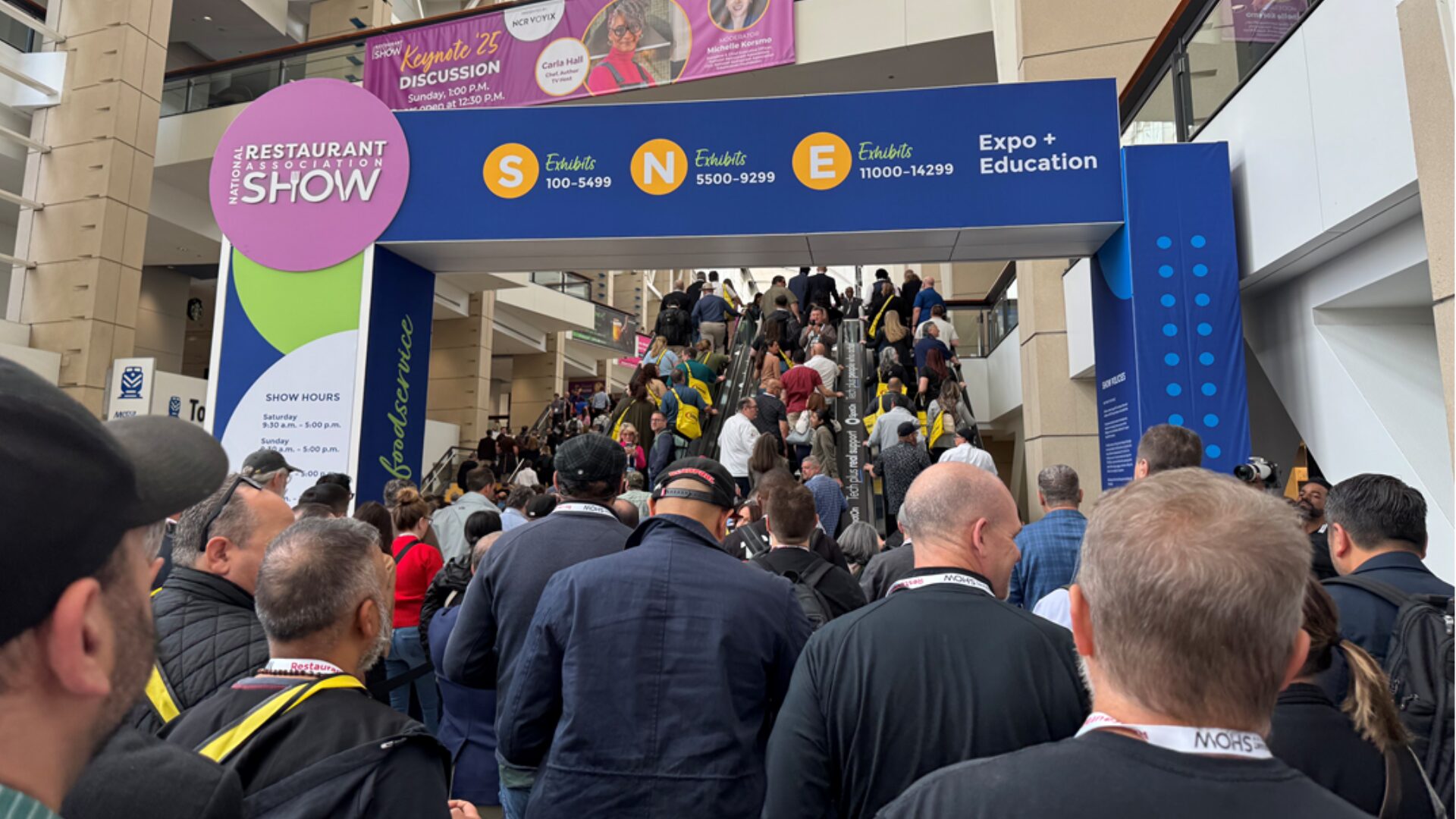Leonard Bernstein, famous conductor of the New York Philharmonic, once said, “Music can name the unnameable and communicate the unknowable.”
It may be a bit of a stretch, sure, but many brands and operators would love to communicate their goods and services as easily as one’s favorite music – jazz, rap, classic rock, R&B, instrumental, whatever – speaks to each and every consumer. That’s why The Food Institute spoke to Matt Elsley, co-founder and CEO at Qsic, an AI-powered audio platform for retail media. Elsley has spent over a decade unlocking audio’s potential for retail environments, and who has learned that in-store audio can drive quantifiable results to help consumers at the point of sale and enhance the overall buying experience.
“In-store music has the ability to invoke emotion and influence behavior like no other kind of channel,” Elsley said.
“The question of what [consumers] want to hear is more nuanced than ever before, and shoppers desire music that complements a store and enhances their experience – not just today’s top hits or elevator music.”
What does the staff of The Food Institute play when working? Here are some jams from TFI.
Call it what you want – background music, elevator-style muzak, or merely tonal mood music to proffer a more peaceful in-store experience – there’s no doubt that the right music, at the right time, can really elevate a shopper’s experience with a store, a brand, and even the products within. And the history is a bit more interesting than many know.
“Background music was originally used as a way to boost productivity for factories, and then expanded into brightening stores and workplaces, calming nervous patients in doctors or dentist offices and easing travelers during the early days of the elevator,” Elsley explained, noting that background music today has evolved far from the mindless-yet-pleasant music of the past; instead, what’s pouring from overhead speakers in retail or wafting from a countertop radio has evolved to further enhance customer and staff experiences and meet shifting music tastes. Elsley said the tempo can help slow shoppers down to enjoy browsing the aisles or speed up traffic and turnover during peak times with a sense of excitement or urgency.
The technology to customize a shopper’s experience with their preferred tunes already exists; the question is how to implement it without stepping on the toes (or assaulting the ears) of others around them.
“We’re getting closer to personalized music experiences in large retail chains thanks to advancements in technology, data analytics, and AI, but we aren’t quite there yet,” Elsley said, “however, it would be really interesting to see more retailers adopt their own unique sound that acts as an extension of their brand.”
Elsley said tailored music experiences can have a significant impact on customer engagement and certainly personal satisfaction. And unlike Muzak from the 20th century, companies like Qsic use AI and analytics technology to help retail partners optimize their music strategies based on real-time insights to become more in-tune – if you will – to their shoppers’ purchasing habits. Elsley said his team can even generate ad content in real-time that is localized for each store specific to its location, foot traffic, and more.
Thunder Only Happens When It’s Raining, or Strategically Played During Morning Hours
When asked about one editor’s favorite music while working – a little Thundercat, a little Solange, maybe some vaporwave or Delta Spirit – Elsley said that TikTok functions as a catapult for some artists to be discovered or even rediscovered, as was the case with one of the most famous TikToks ever during its start as a platform: Where were you when you first saw 420doggface208 hit the road on his skateboard with a bottle of Ocean Spray after his car broke down, delivering the chill vibes with Fleetwood Mac’s “Dreams?”
@420doggface208 ♬ Dreams (2004 Remaster) – Fleetwood Mac
“ ‘Dreams’ saw a huge surge in global charts due to that video,” Elsley said, “and that song was written in 1977. This tells us that consumers are not limited by what’s new – more by what’s trending. This allows us to explore opportunities outside the conventions of ‘Pop’ music when curating large-scale music programs.”
Elsley said that’s why it’s important to have an in-store system that can be updated in real-time opposed to waiting for the next set of CDs to pop into the media player or some curated, licensed music program to recycle the same tired tunes over and over.
“Our music curation teams are able to be agile in jumping on music trends for maximum impact in-store,” he noted.
Elsley also said that the “Psychology of Audio” has been studied extensively and verified that certain beats, genres, and tempos perform better at different times of the day in a retail setting, just like his example above – if you want to move traffic through the aisles and out the door, play something to get people moving.
Maybe not Metallica, but something with a sense of urgency. Though Metallica would work for me.
Auditory Solutions for Advertising Partners
“The power of audio in retail goes beyond just music,” Elsley said. “Incorporating carefully crafted messaging and advertisements into the auditory experience can further enhance customer engagement and drive sales.”
He noted that volume and speaker systems are certainly a key factor when it comes to the auditory side of retail environments because either can lead to audio ad fraud.
“Employees at retail locations may unplug a store’s legacy media players to play their own music or turn it off completely. And as store location gets busier and louder, staff may not have the time to manually adjust volume to ensure that music and the ads are actually played.”
To avoid this, Elsley pointed to systems such as Qsic’s zero-touch IP speaker solution, which can help automatically adjust in-store volume based on ambient noise to guarantee music and ads are heard and even time-stamped for partner verification.
“Finally, I think it’s worth noting that audio will be the first channel that’s going to allow the real world to A/B test rapidly and showcase how the creative can impact over-the-counter purchases,” he said.
That – along with some pantry staples and maybe a bottle of Ocean Spray – sounds good to me.
The Food Institute Podcast
Corn stocks, poultry flocks, and highly-pathogenic avian influenza – what does the U.S. agricultural system look like amid inflation and other headwinds? Wells Fargo Chief Agricultural Economist Dr. Michael Swanson discussed specialty crops, grain plantings, and what to expect in the growing year to come.












